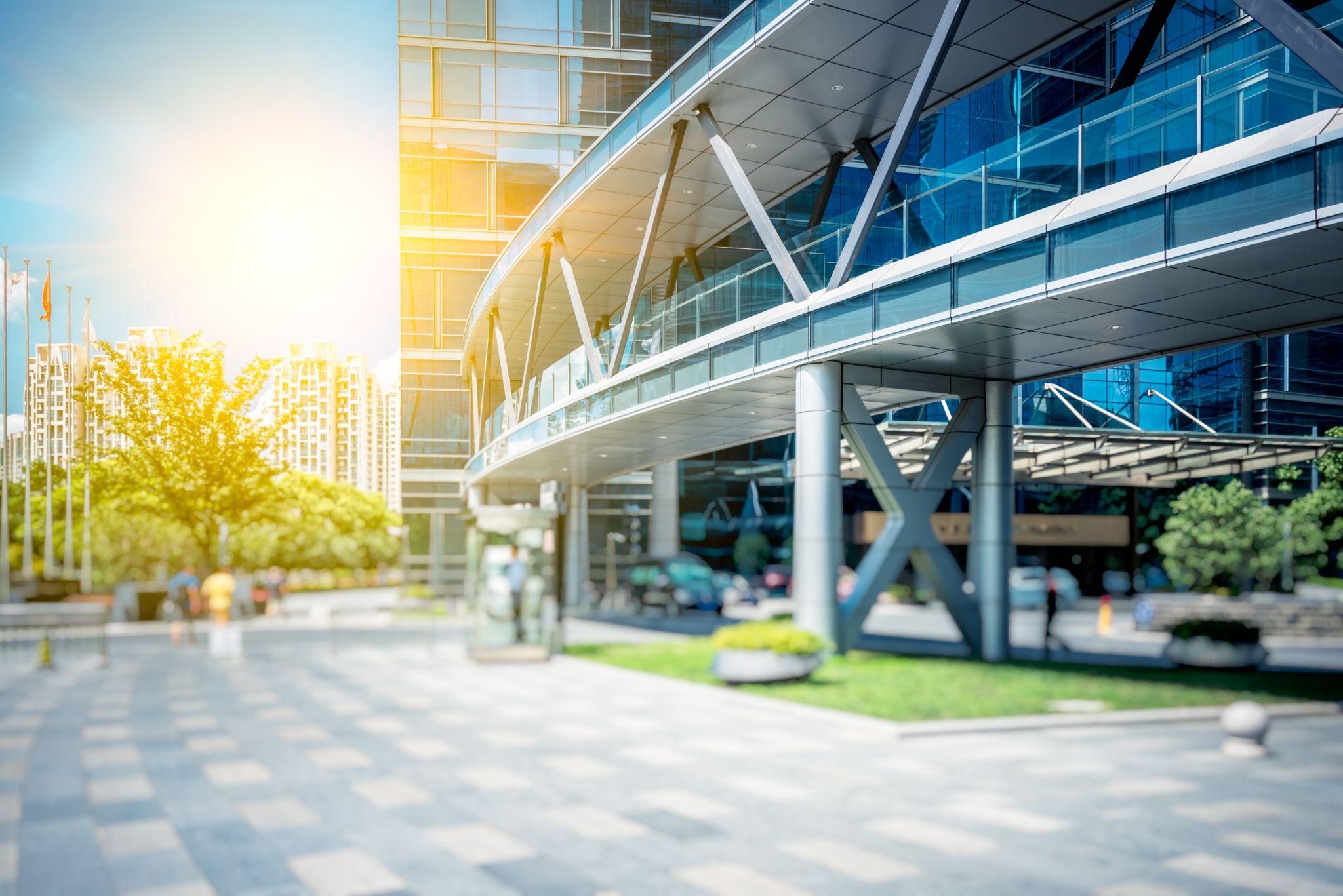
Sustainability is one of the hottest topics in the modern construction landscape. Tightening government regulations and an increasingly conscientious consumer base make it incumbent upon businesses to do their part in limiting their carbon footprint. With this in mind, the march to net-zero starts during the construction process. Keep reading as we explore 7 of the best ways to make a commercial building project more sustainable.
Use the Latest Technology
Technology is changing the game in terms of sustainable construction. There are many high-tech materials that reduce energy requirements during the construction process and limit ongoing repair and maintenance resources. Modern construction management software helps streamline communication, budgeting, and document upload, reducing transportation costs due to redundant in-person meetings.
The latest 3D printing technology allows architects to create the ideal part to do the job accurately without extensive trial and error. Advanced AR and VR software give architects and designers unprecedented ability to see their plans in action. This allows them to simulate disaster response, check material and design compatibility, and predict future outcomes that can limit costly and energy-consuming re-work scenarios.
Employ Passive Building Concepts
Passive building design uses the natural characteristics of the job site to aid in lighting, heating, cooling, and ventilation. This reduces over-reliance on electricity. Natural daylighting is one of the top considerations in passive design.
The building will feature strategic orientation and large windows to optimize sunlight coming into the structure. Advanced low-e windows allow light transmissions while limiting thermal radiation, ensuring that extra sun exposure does not overheat the structure during the warmer seasons of the year.
To help improve ventilation and natural cooling, the building can be constructed with the shorter axis aligning with the prevailing wind patterns. This guarantees that breezes hit the largest surface area possible. Advanced storm louvers can be implemented to ensure optimal ventilation without allowing precipitation or projectile debris to pass into the structure.
Increase Functional Exterior Space
Adding functional exterior space is a great way to make a building more sustainable. By creating exteriors for occupants to enjoy, it reduces the amount of time spent in conditioned interiors. It can also help enhance longevity and reduce cleaning resources. Exterior spaces must be well-constructed in order for them to receive use. Durable flooring pavers help promote drainage while maintaining inviting aesthetics amid heavy foot traffic.
A commercial hand railing system secures the perimeter and defines the space. Shading devices, such as louvered pergolas and retractable awnings, guarantee that the sun is moderated at all hours of the day for a more comfortable environment.
Keep the Job Site Clean
A clean, organized site can do wonders for promoting sustainability. It helps prevent materials from getting damaged by weather. It limits the risk of injury to workers or damage to equipment. Have clearly marked bins for landfill, recycling, and compost to ensure the most mindful waste disposal possible. Be in close contact with a hydrovac service provider to promptly clean up any liquid spills or hazardous materials.
Leverage Prefabrication Processes
Prefabrication can add a high level of efficiency to the construction process. By manufacturing and fabricating key building components in a controlled factory setting, construction projects can reduce some of the variability inherent to traditional on-site construction.
This offers greater precision during fabrication and reduces risk such as weather damage and construction theft. Prefabricated metal buildings are one of the top building types in this regard. They come in easy-to-assemble kits that can be operational in a matter of months. They also require less elaborate foundations than wood-panel construction. This all adds up to fewer resources consumed at the job site.
Optimize HVAC Systems
Even the most sustainably-designed buildings will require some HVAC consumption during the most extreme temperatures. Therefore, it is crucial to optimize the HVAC system to guarantee that it uses as little energy as possible while it is in action. Backdraft dampers help control the flow of conditioned air and guarantee that no energy is wasted on re-heating or re-cooling.
Smart thermostats give building managers unprecedented control over heating and cooling, keeping each area of the structure at its ideal temperature for comfort and functionality. Sound attenuators and hvac silencers help prevent noise pollution from the HVAC system during times of peak usage.
Switch to Just-in-Time Material Delivery
Weather damage and construction theft are major impediments to sustainable construction. They require more resources to be consumed than originally intended. They may also necessitate more extensive storage and security infrastructures. As such, it is worthwhile to consider the merits of just-in-time material delivery. By partnering with top-quality providers to ensure that the right materials are delivered in the right quantity to the right place at the right time, projects can ensure the utmost efficiency in their material sourcing process.
Make Your Commercial Project More Sustainable Today
Sustainability is one of the top priorities in the modern economy. Businesses can get a leg up on their march to net-zero by choosing sustainable construction practices. From leveraging the latest technology to choosing just-in-time material delivery, any of the ideas listed above can help make a commercial building project more sustainable. For more of the latest trends in sustainability, green living, and wellness, explore the resources at Magazine MN for ideas and inspiration today!
About the Author
Andrea Erickson is a freelance writer who loves sharing her knowledge and expertise in renovation and Interior Design. She lives in her hometown of Austin, Texas where she enjoys spending time with her husband and decorating with her children. Andrea’s work as a freelance writer can be found on Building Product Advisor, a construction industry resource site.
You may also like
Materials Matter: Sustainable Choices for Home Construction
Building the Future: Exploring Sustainable Material Choices for Commercial Office Spaces
Top 6 Sustainable and Durable Materials for Home Construction
The Environmental Impact of Solar Energy
